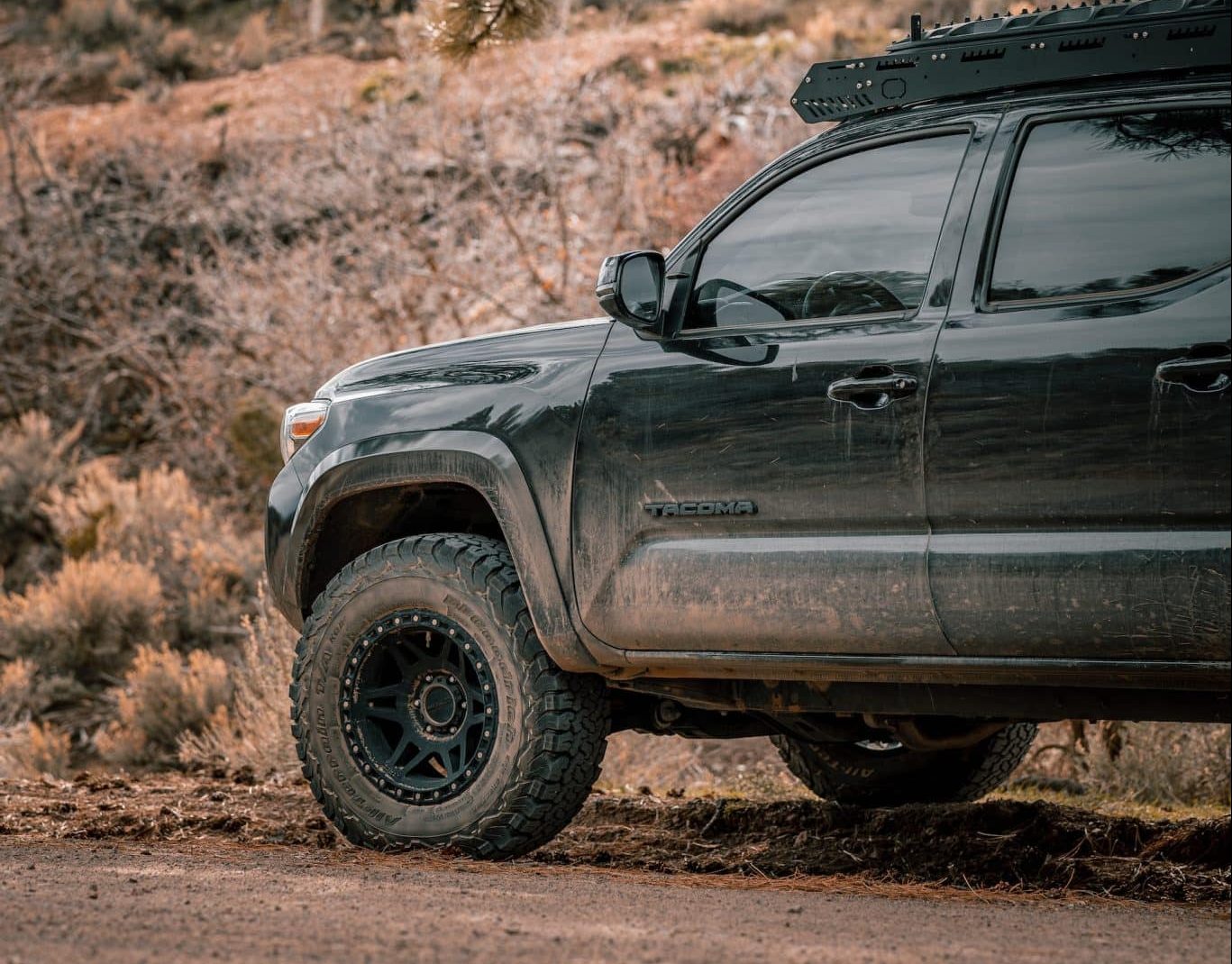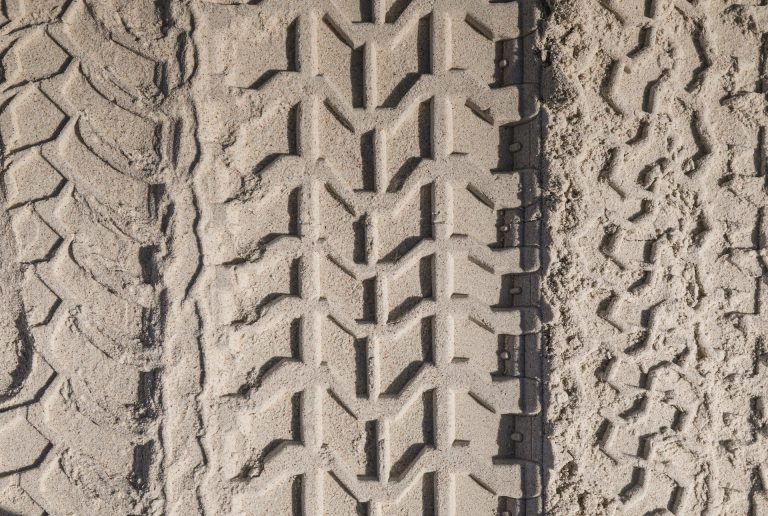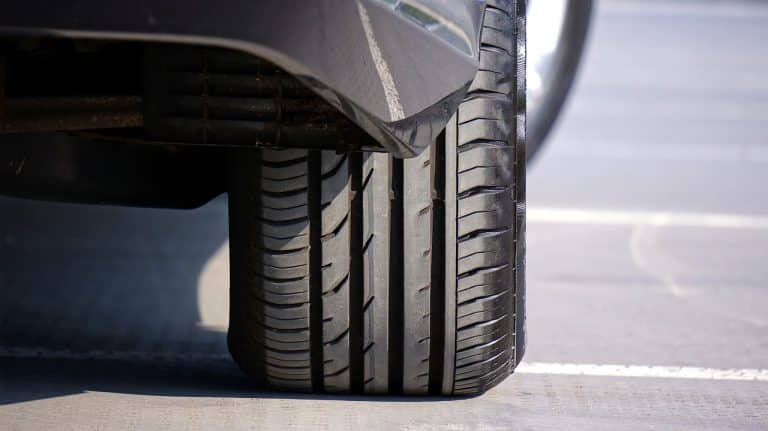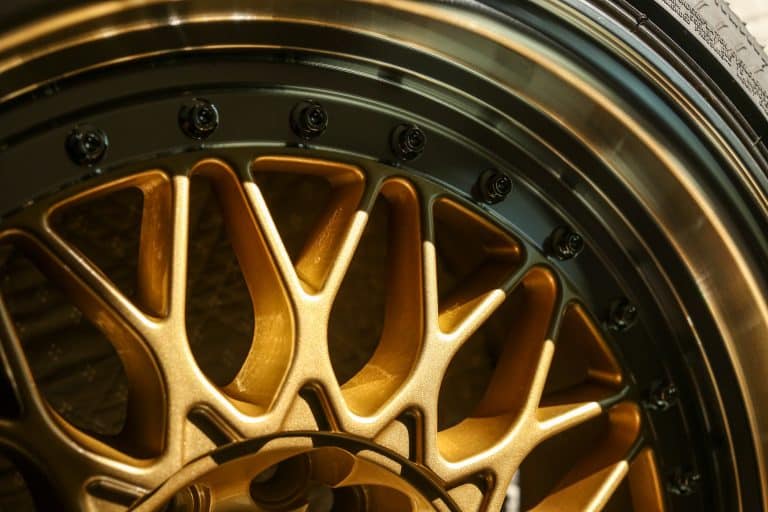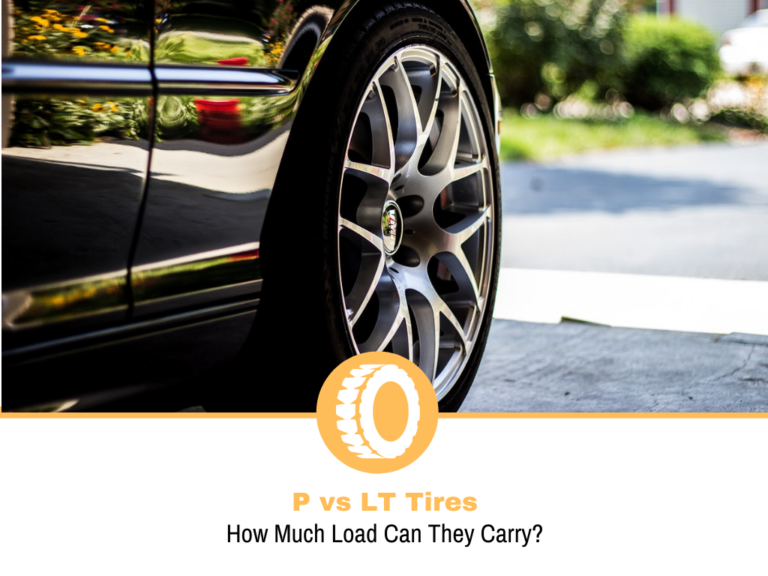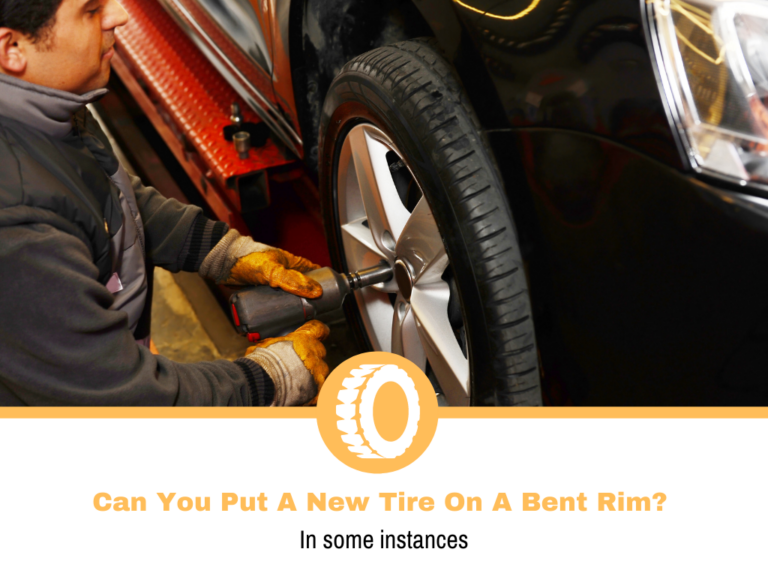Tire Rotation For 4-Wheel Drive
Fact: Tires are costly. They are one of the reasons maintaining a car is not cheap. Tire rotation may extend your tires’ life when practiced and performed regularly. The time and money you save by not having to replace expensive sets of tires are substantial.
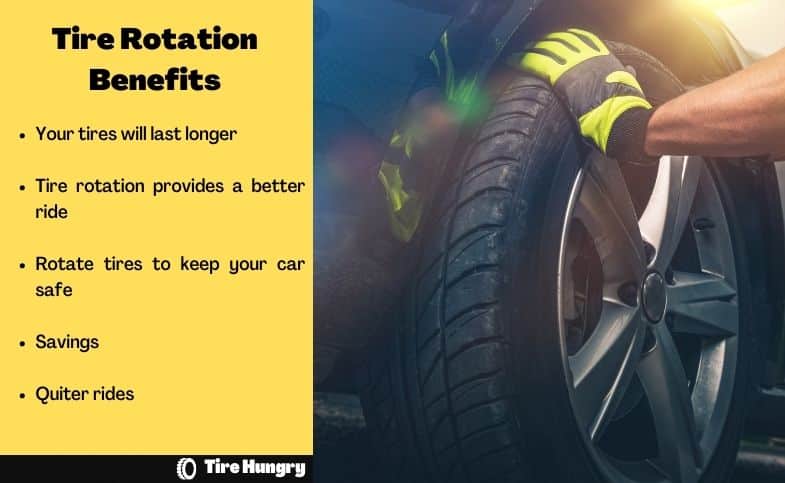
Tire Rotation For A 4-Wheel Drive
Four-wheel drive cars and trucks are different from all-wheel drive cars and trucks because 4WD is better for use off-road. AWD may have settings controlled by a computer to help it handle off-road conditions, but that isn’t the same as having a low gear that is only used for rough terrain.
Having said that, tire rotation for a four-wheel drive works slightly differently. Due to the central differential, four-wheel vehicles have a more even weight distribution through all four tires. This means that your four-wheel will always handle better and grip the road better if all four tires have the same tread depth.
So, how should you do tire rotation for a four-wheel drive?
Tire Rotation Patterns For Four-Wheel Drive
As hinted above, all-wheel drive is not the same as four-wheel drive, but they are similar in some ways. The same tire rotation patterns that work well for AWD also work well for four-wheel drive.
There may be times when a four-wheel drive system works differently, and tires with a different pattern would be better. Check the owner’s manual that came with your car for any special instructions on tire rotation for your four-wheel drive.
Rearward Cross Pattern
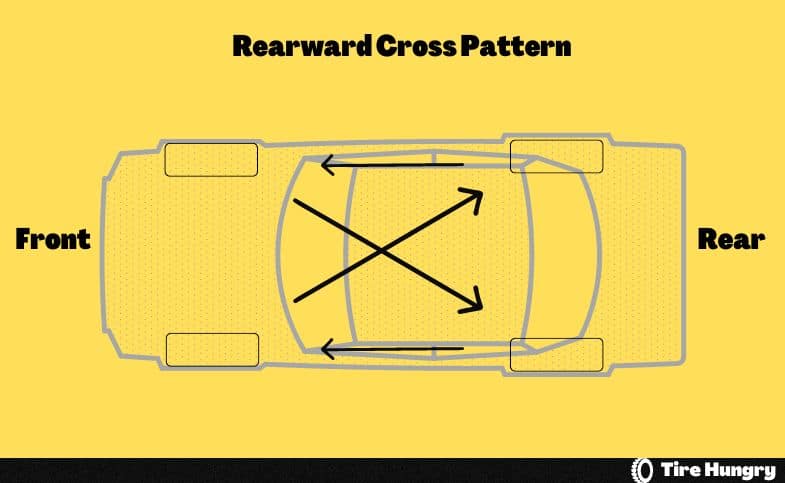
The rearward cross is the most common way for four-wheel drive cars to rotate their tires. This pattern moves the front tires back and to the car’s or truck’s opposite sides.
The back wheels move forward, but they don’t switch sides.
The X-Pattern
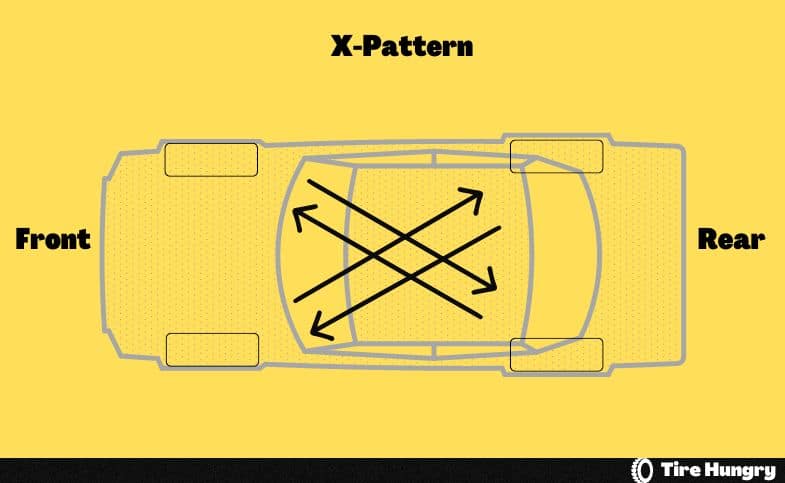
The X-pattern is very common and is acceptable for four-wheel drive cars. It moves the front tires to the back of the car and to the opposite sides. The back tires move forward and to the other side of the vehicle.
Best Tire Rotation Pattern for Four-Wheel Drive
The rearward cross rotation pattern is ideal for most 4WD vehicles since it will move every tire to every position and result in the most uniform wear over time.
The X-pattern only switches the tires on the vehicle’s opposing corners; until the rotation pattern is altered. And the tires will never be put in the other two locations.
Tire Rotation on Four-Wheel Directional Tires
Directional tires can only turn in one direction and must stay on the side of the car they were made for. If you move them to the other side of the car, they will spin in the wrong direction, which can be very dangerous, especially when the roads are wet.
Because they can’t switch sides, directional tires can only be turned from front to rear.
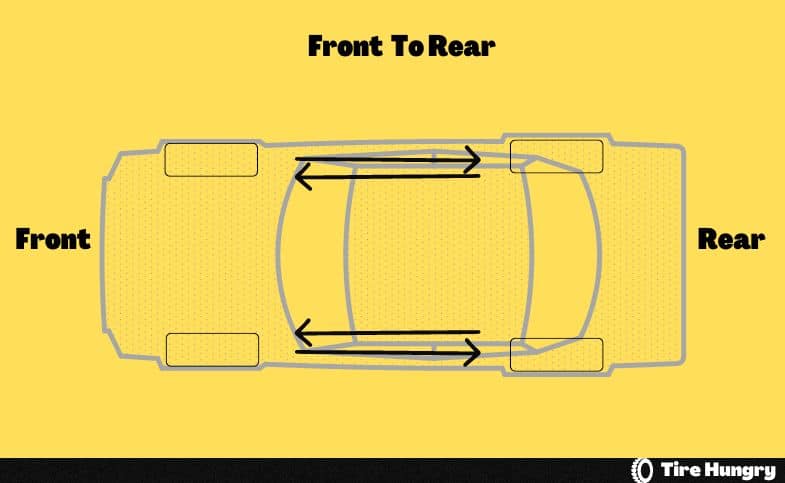
It is pretty clear how to switch tires from front to back. The front tires move to the back of the car without crossing over to the other side. Then the back tires go to the front. Moreover, without moving the vehicle around.
Tire Rotation on Four-Wheel Staggered Tires
Staggered tires are tires on the front and back axles that are different sizes. The back wheels and tires are sometimes wider or bigger to improve handling and traction.
These larger rear wheels and tires shouldn’t be moved to the front axle, and it should be clear that the smaller front wheels should be moved to the back axle. This means that it can only move from side to side.
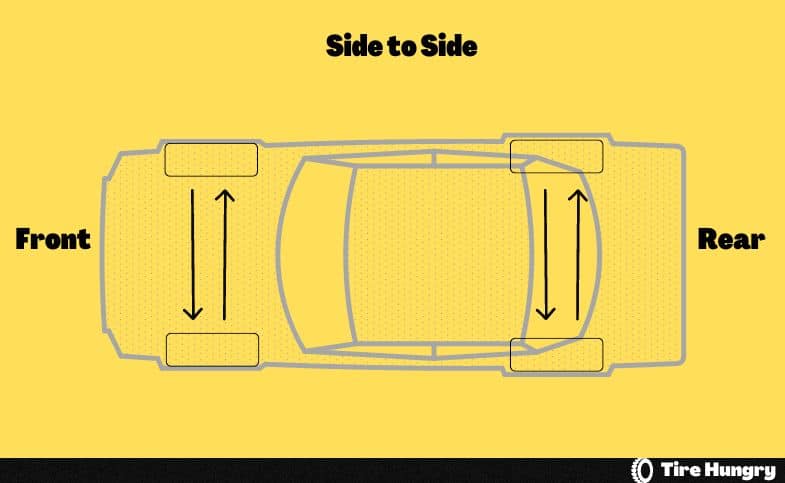
It is easy to rotate staggered tires from side to side. Both the front tires and the back tires switch places. They don’t change which axle they are on, just which end of the axle they are on.
Rotating from side to side isn’t very helpful, but it can be useful. Even more so if your tire manufacturer will honor their warranty even if your wheels and tires are not the exact sizes.
Tire Rotation on Four-Wheel with Full Size Matching Spare Tire
Spare tires that are the same size as the four main tires and have wheels that match them should be rotated regularly. This can significantly affect how long the whole set of tires lasts. It also makes sure that the spare tire gets used so that it doesn’t get old and dry rot without being used.
Lastly, having a spare tire in good shape will save you time and money if you ever find yourself in an emergency scenario. Spare tires that don’t match the vehicle are frequently overlooked, resulting in dry rot and air pressure loss.
If you neglect to maintain your spare tire, you may not be able to use it when you need it most.
Rearward Cross Pattern for Four Wheel Drive with Spare
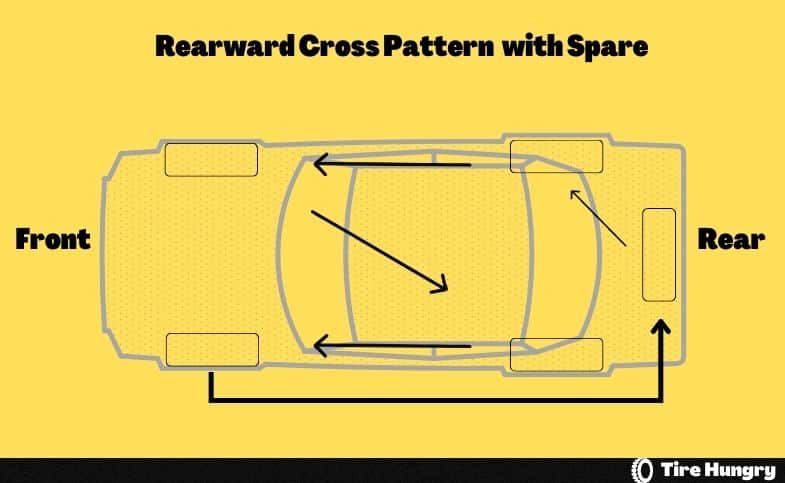
The rearward cross five-tire pattern is a variation of the standard rear cross pattern in consideration of the spare tire. The driver’s front is moved to the spare placement, and the spare is returned to function for the passenger rear.
Do Four-Wheel Need Rotation?
Usually, a tire manufacturer’s warranty on a set of tires will not be valid unless the tires are rotated. You should take care of this warranty because it can save you a lot of money.
Even if your tires don’t come with a warranty, you should still have them rotated, so they wear out evenly and last as long as possible.
How Often Should Tire Rotation Be Done on A Four-Wheel Drive?
The company that makes your tires will tell you how often you should rotate them, and it will be different for each tire. Each tire maker will tell you how many miles you can go between tire rotations.
Most tire companies offer a mileage warranty on their tires, and if you want them to honor a warranty claim, the tire rotation mileage can’t be more than the mileage they set.
This number is usually between 5,000 and 8,000 miles, but it can be different for several reasons. Motorists are often told to rotate their tires every 5,000 miles because that usually meets or exceeds what the tire manufacturer requires.
Always check the paperwork with your tires to see how many miles you need to go before rotating them. You should also look at the paperwork to see if there are any other steps you need to take to keep your tire warranty valid and get the most out of your tires.
Is There A Difference Between 4×4, Four-Wheel Drive, and Full-Time Four-Wheel Drive?
People often use the terms four-wheel drive, 4×4, all-wheel drive, and full-time four-wheel drive in the wrong way.
No matter what they are called, most of these systems will use a cross or x-pattern rotation. This is because the back tires almost always wear out faster than the front tires. Some front-biased systems or those that put more wear on the front tires might benefit from the forward cross pattern.
To better understand these systems, here’s breaking down what each one means.
4×4 (Four by four)
This means that the vehicle is moving forward with the help of all four tires. This is the parent group that all the other names fall into.
Four-Wheel Drive (4WD)
Most of the time, 4WD is a feature that makes a two-wheel drive car into a four-wheel drive car by connecting the other axle mechanically.
Full-Time Four-Wheel Drive
Full-time four-wheel drive means that a car or truck can’t turn from 4WD to 2WD by mechanically turning off one axle. Most of the time, they can choose 4Hi or 4Lo, which is a mechanical setting that changes the gearing from what is used on roads and highways to what is used off-road.
Conclusion
When doing tire rotations on a four-wheel drive car, it is essential to ensure that the tread depth on all four tires is the same. If not, the transmission could wind up. When this happens, some tires get more stress than they need to because all four wheels move different distances when the car turns.
Transmission wind-up usually happens to four-wheel drive cars on rough roads. You may notice it when your tires start to skip over the road’s surface or when the steering gets hard. At this point, a lot of damage can be done.
This could happen to parts of the transmission, axles, or differentials, all of which are very expensive to replace.
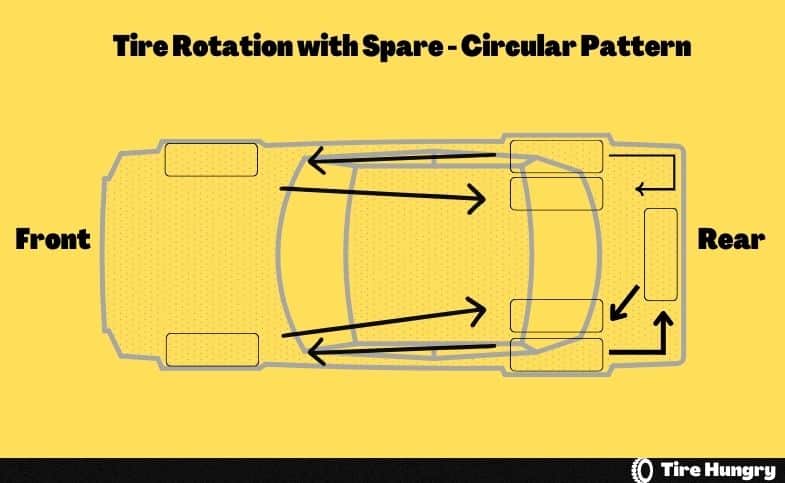
Using a new circular layout, drivers’ outside rears are now spares, while their inner rears are now used as a second set of spares.
Spare Tire Directional Pattern
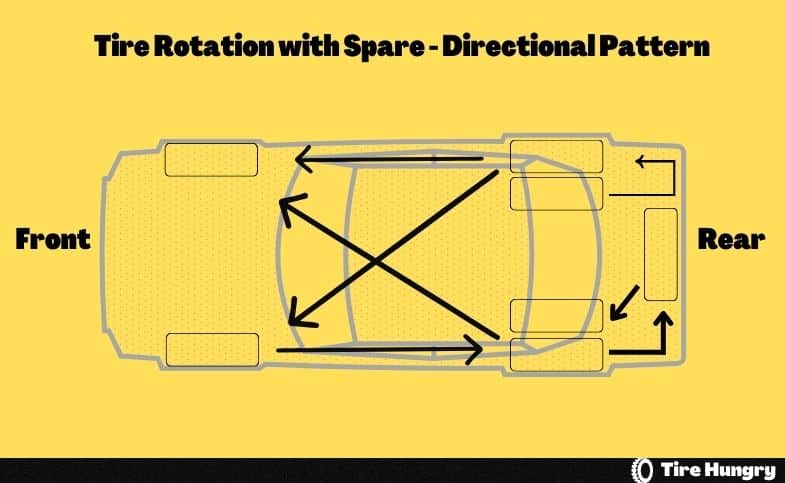
Typically, if you have six identical wheels (all steel), you’d take the driver’s inner rear wheel and store it in the spare spot. The spare tire would be relocated to the back of the vehicle behind the driver. Otherwise, the two-way pattern would remain the same as it is now.
Spare Tire Side to Side Pattern
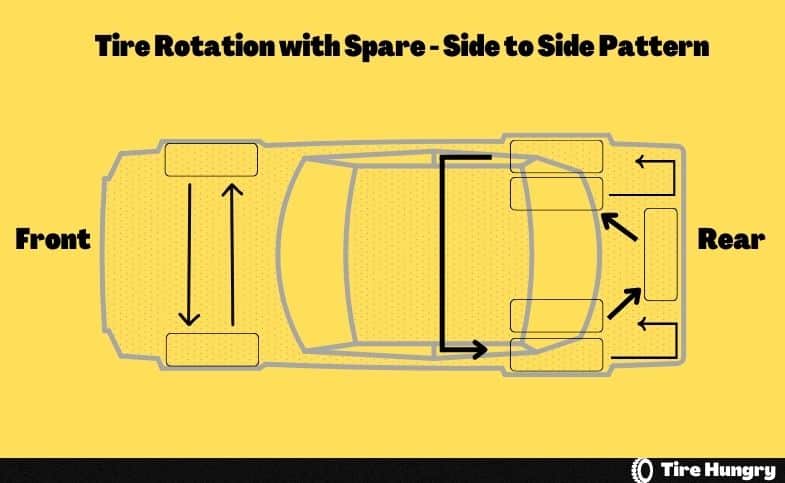
If all four rear wheels and tires are identical, the driver’s inner rear will become the spare, and the passenger’s inner rear will become the spare. You’ll see the identical pattern to complete the rotation as in the previous section.
How Should Tires Be Rotated on A Dually?
Rotating tires on a dually depends significantly on what kind of restrictions you might run into. If you can, the best way to do it is in a circular pattern.
For the circular pattern to work, all the wheels and tires must be the same. This is not true for many people who own duallys. The front and rear outer wheels are often made of aluminum, while the inner rear wheels are made of steel.
This means you can’t rotate your tires any way but from side to side or like for like.
Less good comes from rotating a tire from side to side than from front to back or from the inside to the outside of the back. Most experienced dually truck owners with three different sets of wheels don’t rotate their tires unless they notice that they are wearing down in different places.
How Often Should You Rotate Dually Tires?
Tires on a dually truck should be rotated every so many miles to keep the tires’ warranty valid. Most tire makers will tell you to rotate your tires before they reach a certain number of miles.
Most of the time, rotating your tires every 5,000 miles will meet or exceed this requirement, but it can vary, so read the paperwork you got when you bought your tires to make sure you rotate them according to the manufacturer’s instructions to keep your warranty.
How Are Dually Tires Mounted?
The rear axle has two rear wheels that face each other. On each side, the driver and the passenger’s will have two wheels that face each other. The front and inner wheels are set up like they usually would be. The outer backs are mounted with their backs facing in.
Is Rotating of Aftermarket Dually Tires Possible?
Most of the time, you can only turn aftermarket dually wheels from side to side. This is because the aftermarket tires on the front and the aftermarket wheels on the outside of the vehicle are usually made in very different ways.
Since they can’t be seen, the inner rear wheels are often made of cheap steel.
The back wheels of dually trucks with six steel wheels face in instead of out. This is taken into account by the designs of aftermarket front and outer rear wheels, which are different but work well with inner rear steel wheels.
Conclusion
Tire rotation on a dually is much more complicated than on a car with only four tires, but it’s still a good idea to have this service done regularly.
If you rotate your tires regularly, it can help even out how they wear. This will help your tires last longer, make the ride smoother and quieter, and is usually needed to keep the mileage warranty on your tires.
